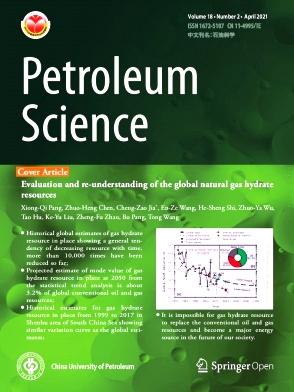Impact of temperature and salinity on fines detachment: AFM measurements and XDLVO theory
IF 6
1区 工程技术
Q2 ENERGY & FUELS
引用次数: 0
Abstract
Fine particle detachment and subsequent migration can lead to severe pore plugging and consequent permeability decline. Therefore, it is crucial to quantify the critical condition when fine particle detachment occurs. The frequently observed deviations or even contradictions between experimental results and theoretical predictions of fines detachment arise from an insufficient understanding of adhesion force that can be highly influenced by salinity and temperature. To clarify the intrinsic influence of salinity and temperature on fines detachment, adhesion forces between carboxyl microspheres and hydrophilic silica substrates in an aqueous medium were measured at various salinities and temperatures using atomic force microscopy (AFM). The AFM-measured adhesion force decreases with increasing salinity or temperature. Trends of mean measured adhesion forces with temperature and salinity were compared with the DLVO and XDLVO theories. DLVO theory captured the trend with temperature via the impact of temperature on electric double layer interactions, whereas XDLVO theory captured the observed trend with salinity via the impact of salinity on the repulsive hydration force. Our results highlight the significance of hydration force in accurately predicting the fate of fines in porous media.
求助全文
约1分钟内获得全文
求助全文
来源期刊

Petroleum Science
地学-地球化学与地球物理
CiteScore
7.70
自引率
16.10%
发文量
311
审稿时长
63 days
期刊介绍:
Petroleum Science is the only English journal in China on petroleum science and technology that is intended for professionals engaged in petroleum science research and technical applications all over the world, as well as the managerial personnel of oil companies. It covers petroleum geology, petroleum geophysics, petroleum engineering, petrochemistry & chemical engineering, petroleum mechanics, and economic management. It aims to introduce the latest results in oil industry research in China, promote cooperation in petroleum science research between China and the rest of the world, and build a bridge for scientific communication between China and the world.
 求助内容:
求助内容: 应助结果提醒方式:
应助结果提醒方式:


